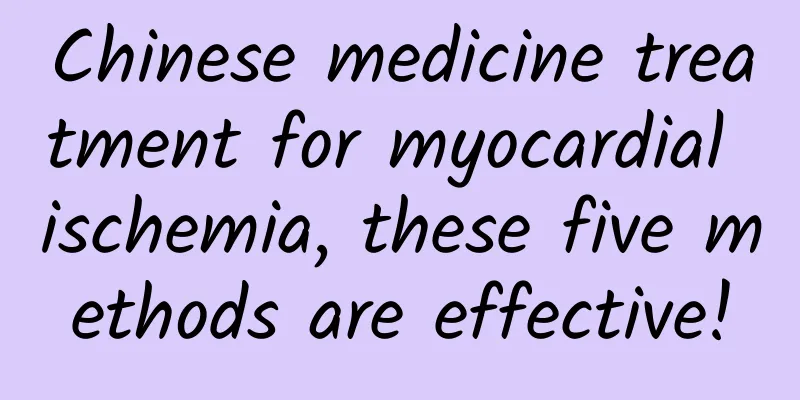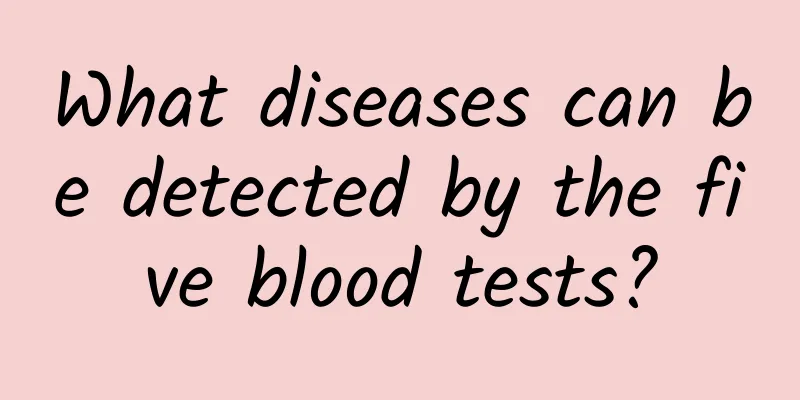Chinese medicine treatment for myocardial ischemia, these five methods are effective!

|
Traditional Chinese medicine is more effective in treating myocardial ischemia without any side effects. Currently, dispelling cold and activating blood circulation, relieving numbness and promoting yang, resolving phlegm and dispersing nodules, promoting yang and removing turbidity, activating blood circulation and removing stasis, dredge meridians and relieve pain, nourish yin and blood, and activating collaterals and relieving pain are all relatively good traditional Chinese medicine treatments. 1) Cold in the heart meridian: Symptoms: Sudden severe heart pain, aggravated by cold, even chest pain extending to the back, back pain extending to the chest, accompanied by cold body and limbs, cold hands and feet, spontaneous cold sweat, palpitations and shortness of breath, pale tongue, thin white fur, and tight pulse. Treatment method: dispel cold, activate blood circulation, relieve numbness and promote yang. 2) Phlegm and turbidity blockage: Symptoms: chest tightness and heaviness, pain radiating to shoulders and back, mostly in obese people, accompanied by dizziness, abdominal distension, nausea, poor appetite, palpitations and shortness of breath, pale and fat tongue with teeth marks on the edges, thick and greasy white tongue coating, and stringy or slow pulse. Treatment method: Clear phlegm and resolve nodules, promote yang and eliminate turbidity. 3) Blood stasis: Symptoms: Sudden severe heart pain after a fit of rage, the pain is localized, like a needle or a thorn, accompanied by chest tightness and breathlessness, palpitations and shortness of breath, blue lips and dark tongue with ecchymosis, and deep, sluggish and intermittent pulse. Treatment method: Promote blood circulation, remove blood stasis, dredge meridians and relieve pain. 4) Deficiency of Yin and Blood: Symptoms: chest discomfort and pain. Dizziness, dry mouth, fever in the five parts of the body, dark urine and dry stools, dark red tongue with little or no coating, thin and rapid pulse or rapid and intermittent pulse. Treatment method: Nourish yin and blood, activate collaterals and relieve pain. 5) Deficiency of Yang Qi: Symptoms: Fullness and pain in the chest, especially when moving, fear of cold and cold limbs, pale face and dark lips, fatigue and weakness. Shortness of breath, spontaneous sweating, pale and fat tongue, white tongue coating, deep, thin and slow pulse, or intermittent pulse. Treatment method: Warming Yang and replenishing Qi, activating collaterals and relieving pain. Myocardial ischemia often occurs after the age of 40, with an average prevalence of about 6.49%. With the improvement of people's living standards, the prevalence of myocardial ischemia in my country is currently showing an increasing trend year by year. Myocardial ischemia is a common and frequently occurring disease among middle-aged and elderly people. People at this age group should seek medical attention promptly and seek diagnosis as soon as possible if any of the following situations occur in their daily lives. |
>>: How to treat simple pityriasis? Use medication according to the condition
Recommend
Causes of severe hemoptysis due to pulmonary tuberculosis: Understand the causes and take preventive measures
Patients with massive hemoptysis may have blood i...
What are the six steps to prevent pressure sores?
In daily life, pressure sores are not unfamiliar ...
Will taking insulin make you fat?
For many diabetic patients, they find that they g...
What kind of prickly heat powder is good for babies? What should I do if my baby has prickly heat?
In the hot summer, many children will have large ...
The efficacy and function of eggplant juice
There are many ways to eat eggplant, but few peop...
What to do when your eyes hurt when looking at the computer
Eyes play a very important role in our human body...
The difference between Huangjing and Huangjing
Everyone knows that Chinese medicine is very prof...
What to do when you have urgent and painful urination? Chinese medicine teaches you dietary treatment
With the deterioration of people's living env...
What are the effects of Shenling Baizhu Pills?
Shenling Baizhu Pills are a kind of Chinese paten...
Causes of white toenails
The whitening of toenails may be caused by onycho...
The advantages and disadvantages of lymphatic scraping
The biggest benefit of lymph scraping is that it ...
What is the cause of the burning sensation in the calf?
The burning sensation in the calves is likely cau...
The difference between Astragalus membranaceus and Astragalus root
Many people think that Scutellaria baicalensis an...
Who should not eat raw sun-dried ginseng?
Many of you may have consumed raw sun-dried ginse...
What are the symptoms of potato poisoning?
Potatoes are a kind of food with high nutritional...









